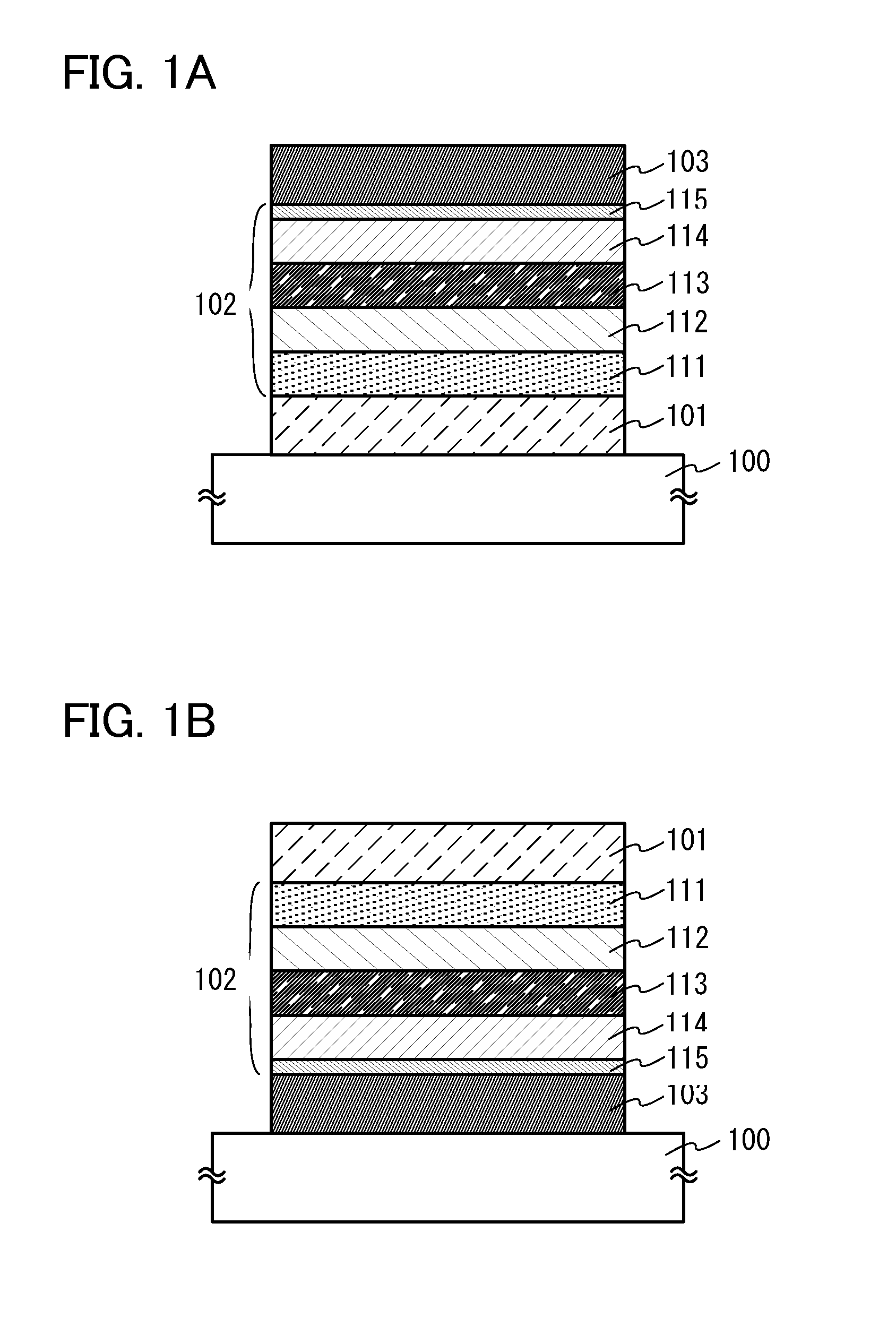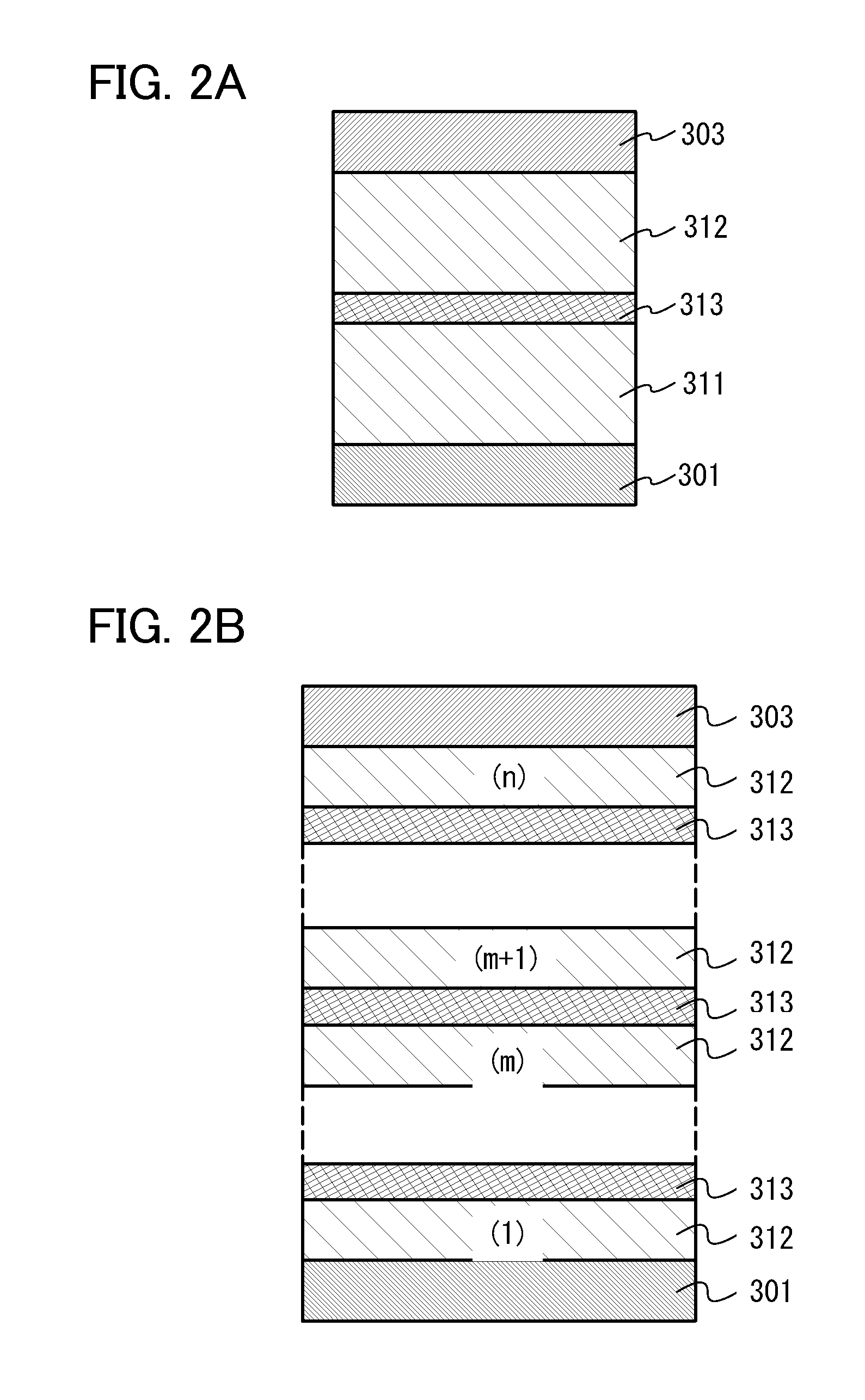Organic compound, light-emitting element, light-emitting device, electronic device, and lighting device
- Summary
- Abstract
- Description
- Claims
- Application Information
AI Technical Summary
Benefits of technology
Problems solved by technology
Method used
Image
Examples
embodiment 1
[0123]In this embodiment, a carbazole compound according to one embodiment of the present invention will be described.
[0124]The carbazole compound according to one embodiment of the present invention is a carbazole compound represented by General Formula (G1).
[0125]Note that in General Formula (G1), R1 represents any one of an alkyl group having 1 to 12 carbon atoms, a substituted or unsubstituted phenyl group, a substituted or unsubstituted biphenyl group, a substituted or unsubstituted naphthyl group, a substituted or unsubstituted phenanthryl group, a substituted or unsubstituted triphenylenyl group, and a substituent represented by General Formula (G1-1). In General Formula (G1), R2 represents any one of hydrogen, an alkyl group having 1 to 12 carbon atoms, a substituted or unsubstituted phenyl group, a substituted or unsubstituted biphenyl group, and a substituent represented by General Formula (G1-2). In General Formula (G1), α3 represents either a substituted or unsubstituted...
embodiment 2
[0191]In this embodiment, as one embodiment of the present invention, a light-emitting element in which the carbazole compound described in Embodiment 1 is used will be described with reference to FIGS. 1A and 1B.
[0192]In the light-emitting element of this embodiment, an EL layer including at least a light-emitting layer is interposed between a pair of electrodes. The EL layer may have a plurality of layers in addition to the light-emitting layer. The plurality of layers are stacked in combination of layers formed of substances having a high carrier-injection property and a high carrier-transport property so that a light-emitting region is formed away from the electrodes, that is, carriers are recombined in a portion away from the electrodes. As the plurality of layers, for example, a hole-injection layer, a hole-transport layer, an electron-transport layer, an electron-injection layer, and the like may be included.
[0193]In the light-emitting element of this embodiment illustrated i...
embodiment 3
[0241]In this embodiment, a mode of a light-emitting element having a structure in which a plurality of light-emitting units are stacked (hereinafter, referred to as a stacked-type element) will be described with reference to FIGS. 2A and 2B. This light-emitting element is a light-emitting element including a plurality of light-emitting units between a first electrode and a second electrode.
[0242]In FIG. 2A, a first light-emitting unit 311 and a second light-emitting unit 312 are stacked between a first electrode 301 and a second electrode 303. In this embodiment, the first electrode 301 functions as an anode and the second electrode 303 functions as a cathode. The first electrode 301 and the second electrode 303 can be the same as those in Embodiment 2. Further, the first light-emitting unit 311 and the second light-emitting unit 312 may have the same structure or different structures. The first light-emitting unit 311 and the second light-emitting unit 312 may have the same struct...
PUM
| Property | Measurement | Unit |
|---|---|---|
| Power | aaaaa | aaaaa |
| Power | aaaaa | aaaaa |
| Power | aaaaa | aaaaa |
Abstract
Description
Claims
Application Information
 Login to View More
Login to View More - R&D
- Intellectual Property
- Life Sciences
- Materials
- Tech Scout
- Unparalleled Data Quality
- Higher Quality Content
- 60% Fewer Hallucinations
Browse by: Latest US Patents, China's latest patents, Technical Efficacy Thesaurus, Application Domain, Technology Topic, Popular Technical Reports.
© 2025 PatSnap. All rights reserved.Legal|Privacy policy|Modern Slavery Act Transparency Statement|Sitemap|About US| Contact US: help@patsnap.com



